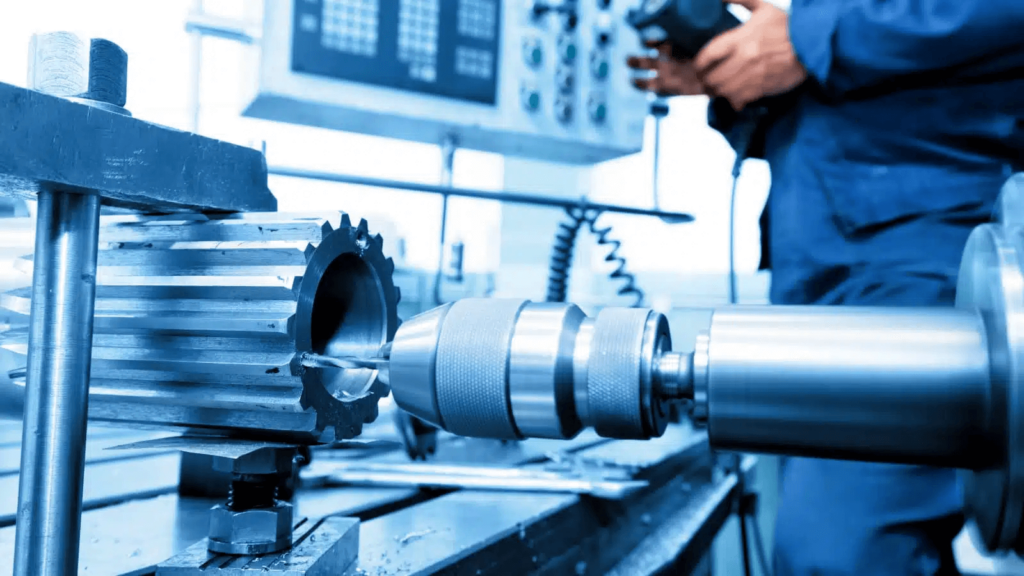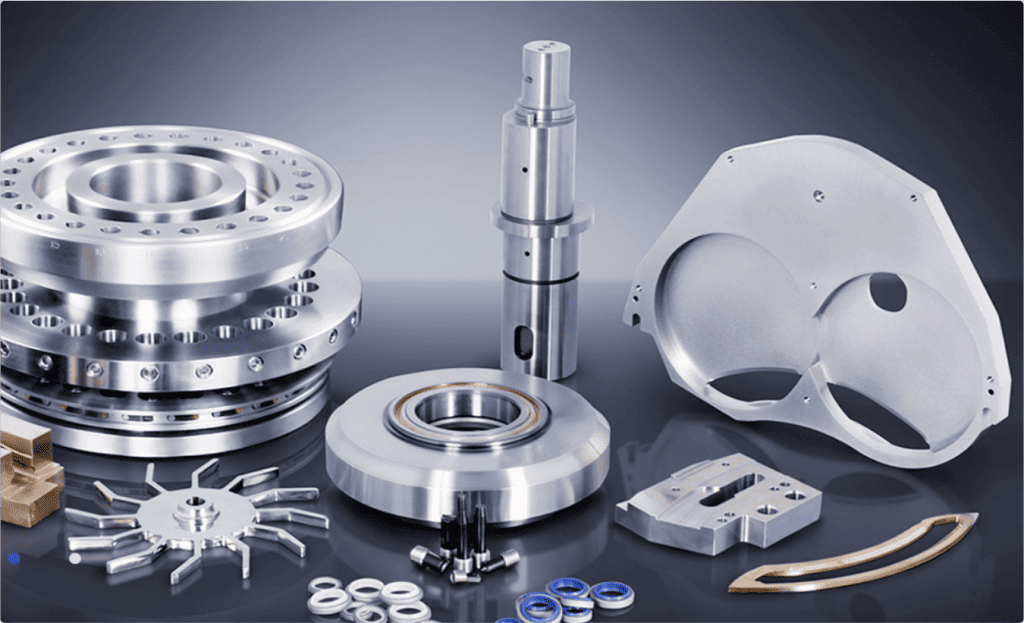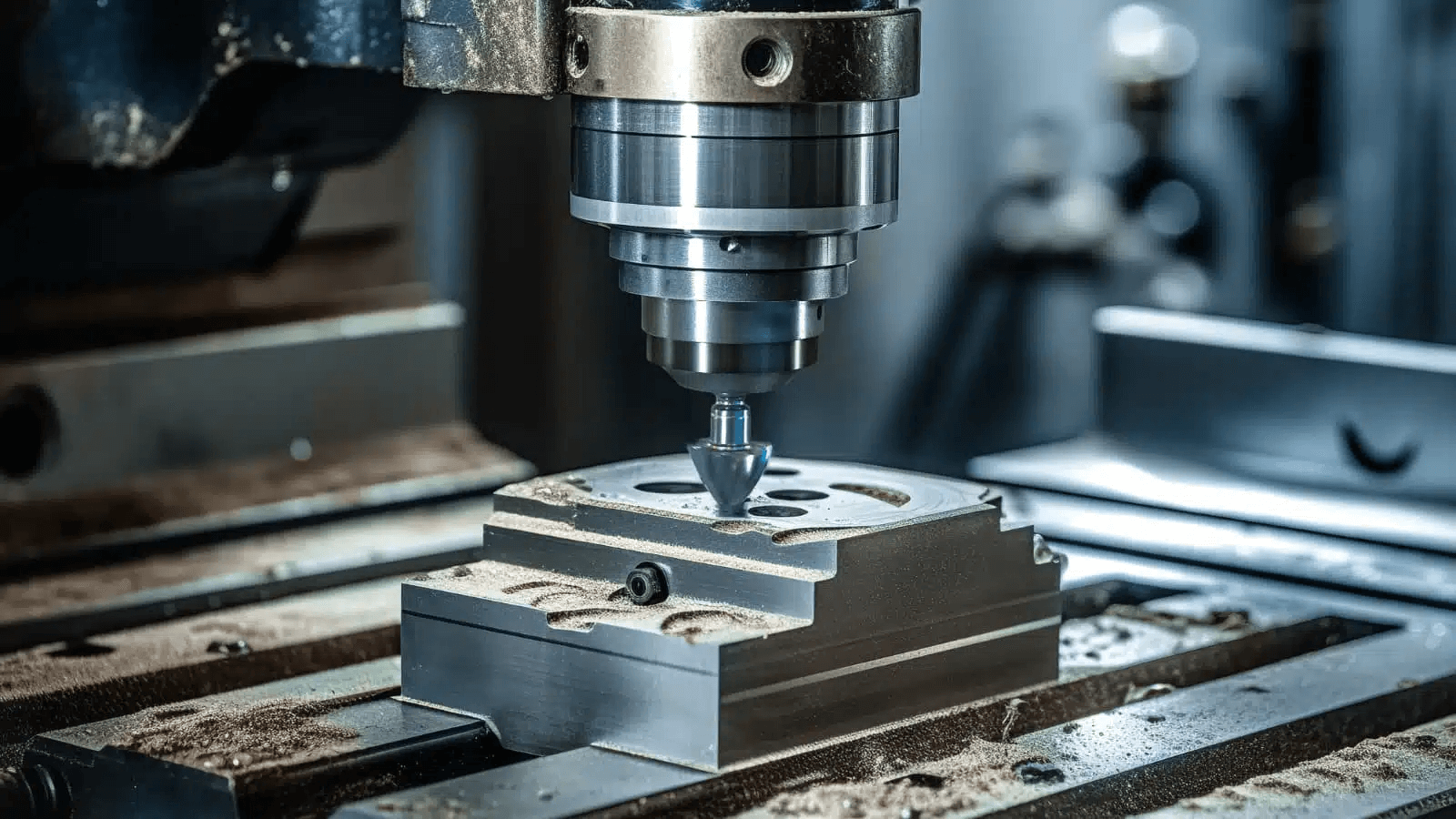Introduction to CNC machining
CNC machining is a subtractive manufacturing process. It uses computer controls and machine tools to remove layers of material from stock parts to produce custom-designed parts. This CNC machining technology combines traditional machining with CNC technology, computer-aided design and assisted manufacturing processes.
First, designers use computer-aided design (CAD) software to create digital 3D models of the required parts. Next, a skilled programmer converts the CAD model into a series of instructions (called G-code) that the CNC machine can understand. Once a program is loaded, the CNC machine firmly clamps a piece of raw material (the workpiece) and uses a computer-controlled motor to move the cutting tool along a precise path. Cutting tools gradually remove material from the workpiece, transforming it into the final shape determined by the workpiece. CNC machining program. This means high-quality CNC machined parts with precise dimensions and intricate details.
Advantages of CNC machining
CNC machining offers several advantages that make it valuable in many applications. Some advantages of CNC machining include:
Accuracy and repeatability
CNC machines accurately replicate CAD drawings, ensuring near-perfect output, with accuracy typically ranging from 0.0002 to 0.0005 inches. The CAD model is converted into programmable codes (G-code and N-code) to control the movement of the cutting tool, ensuring precise results.

Even skilled machinists are prone to errors, leading to variability in accuracy between operators. The CNC process reduces manual handling of tooling, minimizing errors and improving repeatability, which is critical for applications such as batch and mass production. Industrial CNC machinery, such as laser cutters, can provide a high repeatability index of approximately ±0.0005 inches, producing accurate replicas with minimal error.
Ability to produce complex shapes and high-complexity parts
CNC machines offer up to 6 machining axes, providing high manufacturing complexity capabilities. Most products can be produced with workable designs and appropriate machinery. These machines excel at manufacturing complex parts due to their operation, tolerance and surface finish capabilities. Modern CNC technology enables multi-axis rotation and translation, helping to machine highly complex features.
Typically, using machines to make parts requires multiple setups to make all the features. However, higher axis capabilities reduce the number of setups required, thereby enhancing the potential for manufacturing highly complex CNC machined parts. For example, 5-axis machining can cut angles beyond the capabilities of a 3-axis machine. Various CNC milling variations also help maintain design consistency.
Reduce human error and enhance security
Unlike manual machining where operators must constantly adjust tools and settings, CNC machines follow preprogrammed instructions precisely, eliminating errors due to fatigue, misreading or miscalculation. CNC machine tools are often equipped with safety features such as enclosed work areas and automatic shut-off mechanisms to minimize the risk of accidents. Additionally, the operator is kept away from the machine while it is running. CNC machining therefore reduces the risk of injury from accidental contact with moving parts, hot materials or sharp tools.
Efficient mass production
Automated CNC machining methods minimize the need for manual intervention, resulting in faster, more consistent production throughout the manufacturing cycle. With pre-programmed instructions, CNC machines can reproduce the same parts over and over again. This ensures product quality and minimizes waste that can arise from human error. Additionally, modern CNC machines are incredibly fast and can produce large parts quickly.
As production needs change, manufacturers can easily scale up CNC machining processes, providing flexibility for high-volume manufacturing. The flexibility of this production capacity means you can maximize your resources and budget without being limited by the number of parts you wish to manufacture.

Disadvantages of CNC machining
While CNC machining has several advantages that benefit many industries, there are also some disadvantages to keep in mind. They include the following:
Higher initial investment and maintenance costs
CNC machine tools are composed of various components. They include computer systems, CNC controllers, advanced software, cutting tools, gantry frames, stepper motors, and more. They all result in higher initial costs, which may be unaffordable for small businesses. Although some desktop CNC machines are less expensive, their industrial applications are often limited. As complexity increases, many of them also require higher maintenance costs. Therefore, CNC machine tools are more suitable for large-scale projects where efficiency and productivity significantly affect machining costs.
Requirements for skilled operators and programmers
Running CNC machine tools requires experts who are proficient in programmable code and machine operation. Unlike traditional machining that relies on manual labor, CNC machining relies on technicians with technical expertise. This increases operating expenses per part. Nonetheless, over time, CNC machine tools provide cost-saving benefits by providing cost-effective CNC production operations.

Less cost effective for very small batches
CNC machining may not be the most efficient option for small-scale production, mainly due to the higher investment in setup. These machines require significant upfront costs in equipment, tooling and programming expertise. Additionally, each workpiece requires a specific CNC machining program to be created and optimized for it, which increases the time and cost required to set up the machining process. For small-scale production runs that require frequent changes or small batches, this setup time can be a major disadvantage. In these cases, traditional manual machining methods may be more cost-effective and time-efficient.
